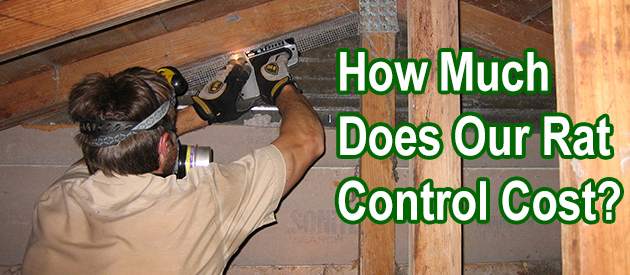Hartford County, Hartford Rat Control Situation:
Hi David, We are very impressed with your website! Sadly, we found it after spending hundreds of dollars with a local exterminator/pest control company. Naturally, we still have a rat problem... We would like to attempt to eradicate and/or handle our "little problem" ourselves (we are pretty handy...) and in this economy we need to conserve where we can (especially after we spent money on the worthless "experts"!) My first question for you is... how do you make a one-way door for rats? We roof rats in our attic. The openings to outside have all been closed up, but we would like to be able to leave the animals a way out... just not a way IN. We liked the photographs on your website of the mesh funnel and the tower-looking one-way door, but we can't figure out how to make them. Do you have specifications or design plans for those two items? We would really appreciate it! My second question is... the product that you use to fog/disinfect after clean-up... does it have to be a fog or can it be a spray? If we fog the attic, how long do the people and the house pets have to be out of the house? My third question is... is an N-95 mask sufficient protection when working in the attic? Thank you, David! Sincerely, Carrie
My response: To make a one-way door, roll steel mesh into a funnel a foot long, with an opening the size of a quarter on the exit end. I wear a Tyvek suit, latex cloves, a HEPA respirator mask, and I remove the feces by hand, plus the soiled insulation, and bag it in plastic bags. I then fog the attic with a special cleaner called Bac-Azap, which helps decontaminate. You can try this yourself at your own risk, or hire a local company in your area off of my professionals directory.
Hartford Rat Control Tip of The Week
How Can I Get A Rat Out Of My Car?
Clean Up Your Car:
When a rat no longer has access to the food inside your car it will no longer have a good place to nest, sleep, or find food. Rats always nest close by to where their food source is and if you have a large amount of garbage in your car or items that can be fed upon, they're much more likely to stick around.
Trim Back Foliage From Your Car:
When you notice branches that overhang your car it's possible that you can have problems with a number of uninvited guests. Trimming back the items around your car can be a crucial way that you can prevent pests like rats from having a direct line to get into the vehicle.
Close Up Your Car:
Make sure that you are closing up your car. If you have a window that is open, a sunroof that opens, or a door that doesn't quite close, a rat can make their way in quite quickly and easily. A rat only needs around half an inch to get into a space and even though it may not seem like there is that much room, a rat can make it into the area easily.
Remove Moisture And Damp Clothing From Your Vehicle:
If you have paper, damp clothing, or other items across your vehicle, they need to be removed quickly. Damp clothing can be an ongoing problem when it comes to attracting rats and keeping them in your car.
Set Down Some Traps:
A quick set trap that you place in your car in the evening or a metal pedal trap can be a great way to manage a rat problem in your car. Making sure that you can trap the rat in your vehicle can be crucial to building a better method of keeping rats out of your vehicle.


